0 Comments
By Murray and Sue DeArmond For the second time in the past few years, we have been blessed with baby bobcats gathering nearby for a drink of water. Seen outside our studio window a few days ago, two siblings were exploring and tussling with each other while Mom kept an close eye on them while resting in the shade of a nearby jojoba bush. Seeing them represents one more reason RillitoBend is a very special neighborhood. It has often been said that one of the pleasures of living in our neighborhood is being at home in the middle of the desert, in the middle of town. The Bobcats in Tucson Research Project (bobcatsintucson.net/) is tracking bobcat sightings and you can participate. Do you see bobcats at your home or in your neighborhood in Tucson?
Email us details at [email protected] Please include your name, street address, or gps coordinates, date you last saw bobcat and a photo of bobcat if you have one.  Catlow Shipek of Watershed Management Group and Ward 3 Councilperson Kevin Dahl at the Park. Photo by Mary Bird Catlow Shipek of Watershed Management Group and Ward 3 Councilperson Kevin Dahl at the Park. Photo by Mary Bird The hard work of RillitoBend neighbors, the City of Tucson Parks and Recreation Department, contractors and volunteer groups is becoming visible in our beloved Rio Vista Natural Resource Park. The progress in our park was recently highlighted with a feature article in the Watershed Management Group’s quarterly publication. Click below for their beautiful photos, and to read about their contributions to Rio Vista on the WMG website. Our monsoon rains are demonstrating the effectiveness of the trail and landscape work funded by Prop 407.  Photo by Mary Bird Photo by Mary Bird Trail edging at the main intersections allows the rain to encourage ground cover outside the trails – and serves to discourage the gradual widening of trails that was creating big bald spots in the park. Love our park? Did you know that our very own RillitoBend website has both a Neighborhood News page and also a Rio Vista Park page? Click below to learn more. Have some of your own great photos of the neighborhood? Share your photos at [email protected] Article by Melanie Campbell-Carter and Mike Shaw Photos by Mike Shaw and Melanie Campbell-Carter  American Kestrel in flight American Kestrel in flight Scientific organizations across the country have joined in studying American Kestrel populations and how they are affected by human activity. The marked decline in Kestrel populations has been under investigation for over a decade by Hawkwatch International (HWI), and our RillitoBend neighbor and Board advisor Mike Shaw has been on the job for Hawkwatch for fifteen years. When the pandemic somewhat stranded Mike in the Tucson area, he kept working by expanding the study area to Southeast Arizona as it was a logical addition to HWI’s mid continent study site in Utah and a smaller satellite study in northern Idaho. He now has 75 nest boxes in Southeast Arizona – and one of the first things he learned was that the boxes around Tucson were far more popular with Western Screech-Owls than Kestrels. The numbers were almost reversed from their two northern sites where Kestrels far outnumber Screech-Owl occupants. However, the boxes outside of Tucson, such as the ones in Sonoita (think cooler temps), get heavy Kestrel usage with only an occasional Screech-Owl. It makes sense: desert heat is rather unfriendly to diurnal, or daytime, raptors. It is too hot for their prey to be out running around, and it is too hot to chase them. Nocturnal hunters such as owls have the advantage of working the night shift at the same time mice and small mammals are most active and available.  Nest box in RillitoBend mesquite tree Nest box in RillitoBend mesquite tree Despite the initial project being designed to study Kestrels, large numbers of Screech-Owls using the Arizona boxes is welcomed by HWI. They’ve been researching small, cavity nesting owls since 2016 in the Chiricahua Mountains southeast of Tucson and the urban/wilderness datasets are great compliments to each other. In fact, HWI’s Kestrel specific study has been enlarged to include all cavity nesting raptors.  Kestrel chick on scale Kestrel chick on scale The first nest box placed in a City of Tucson park was hung in Rio Vista Natural Resource Park. Now at least seven city and county parks have nest boxes and RillitoBend is home to over a dozen boxes scattered throughout the neighborhood. During the February-May nesting season, boxes need to be monitored every 7-10 days and available eyeballs are a critical component of the effort.  Adult screech-owl in good hands! Adult screech-owl in good hands! Mike would be delighted to have you join the other volunteer Community Scientists who monitor boxes in and around Tucson. Hawkwatch will train you how to do it and how to submit the data. They also welcome participation from landowners who have installed a box on their property and are willing to submit data over the same time period. For more details, you can email Mike at [email protected]. For more information about Hawkwatch International, please see their website, Hawkwatch.org. There are several ways to support their research, and Mike ([email protected]) welcomes your questions and your support.
-Article by Melanie Campbell-Carter Photos by Murray DeArmond, Larry Bird, and Melanie Campbell-Carter Click HERE to listen to the night song of the Western Screech-Owl (Megascops kennicotti)  This spring, a small group of neighbors was invited to watch RillitoBend resident and Board advisor Mike Shaw band four Western Screech-Owl chicks from a Clay’s Alley nest box. This was the second year the adult female raised chicks in that box, confirmed by the number on her ankle bracelet. Banding the birds enables scientists to track the movements of individual birds and estimate their ages. We have had active nests in several neighbors properties for the last 3 years.  Mike says the best time to band chicks is at about 20-24 days after hatching. He climbed the ladder, blocked off the front door, then opened the back door and removed the adult female first. After weighing and measuring her and recording her leg band number, he passed her to Estelle and Mike returned to the box to retrieve the four chicks.  He weighed and measured each chick, then measured their leg and attached a band. In owls, the legs and feet grow fastest and are adult-sized by 20 days of age, so there is no worry in attaching a band that is just right in size. All the data is recorded in his field journal. He returned the family to their box safely, then tended to the scratches on his own hands and arms!  Eventually, with enough urban nest boxes and volunteers, Mike will be able to identify second and third generation nesting birds. The Western Screech-Owls of Tucson will then contribute data to a Hawkwatch project taking place in the Chiricahuas that is examining populations of owls living in four different environments (wildland, urban, commercial, and agricultural).  For more information about Hawkwatch International, please see their website, Hawkwatch.org. There are several ways to support their research, and Mike ([email protected]) welcomes your questions and your support. Watch for the next blog post, Raptor Rapture. Learn about Mike Shaw's research and the southeast Arizona Hawkwatch International nest box studies. READ MORE ABOUT THE WESTERN SCREECH OWL
Lindy Brigham - RillitoBend Neighborhood Association Please note that this is a work in progress. Information is still being collected. If you have information to share about any of these plants, suggestions for ways to improve the presentation, or additional plants that should be included, please email [email protected] Many of you are probably aware of various plants that are considered invasive. Some are an annoyance if you want to preserve a mostly Sonoran Desert flora, but some are also dangerous. The following are ones that have been identified in the neighborhood and need to be removed. Remember that they are invasive because they spread so easily. So they need to be removed once they are identified to keep them from spreading. Everyone needs to do their part! While many plants can be sprayed with herbicides, physical removal ensures that seeds will not spread. Wear gloves, bag all plants carefully and put in trash barrels. Make sure you are not spreading seeds on your clothes and shoes. The plants we are most concerned with are Stinknet, Maltese Thistle, Buffelgrass, Cheat Grass, and Red Brome. Below are ways to identify and remove safely.  STINKNET - also called Globe Chamomille - (Oncosiphon piluliferum) Stinknet can cause respiratory or skin allergic reactions. Wear gloves, long sleeves and long pants when pulling the weeds. Here is more information on Stinknet: 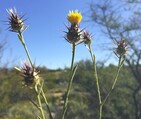 MALTESE STAR-THISTLE - (Centaurea melitensis)  BUFFELGRASS - (Cenchrus ciliaris) More Information:  FOXTAIL - (Hordeum sp.?) Please note that we have not had a botanist identify the plants that are in the neighborhood. There are several grasses that produce seed heads that look like foxtails and they are all dangerous for pets, especially dogs. More Information:  CHEATGRASS - (Bromus tectorum) also called Downy Brome More Information:  Red Brome - (Bromus madritensis ssp. rubens) also called foxtail cress More Information: Note: Images of invasive plants are from the references.
Lindy Brigham - Rancho Morado
Below is a group of three plants growing together that are representative of the most abundant of the current blooms.
Here are some closeups of these plants
 The sour clover is also abundant this year. Clovers and Alfalfas are grown as livestock feed for their nutritional value. They are legumes, plants that collaborate with bacteria in their roots to fix nitrogen. They enrich the soil so less fertilizer is necessary when growing crops. In times before modern agriculture they were used in crop 'rotations' to fertilize the soil between growing other crops. They are particularly attractive to the many bees in the area. Many plants in the desert are legumes. A related plant native to Arizona is 'soft prairie clover' (Dalea mollissima) While these plants are not native, and they tend to outcompete the native plants, they are not a serious threat and can be managed with selective weeding. There are plants that are invasive and a threat to humans and other animals and the next blog will highlight those. All photographs were taken by Lindy. All the plant references are from the Southwest Desert Flora website
Susan Andersen, a resident of RillitoBend since 2006, and our most prolific blog contributor, is leaving. This piece was written in July, so the bats are also nearing the end of their stay. Make sure you have witnessed this spectacle if you haven't already. Original Title WE’VE GOT HOT SUMMER NIGHTS!! |
| Photo from the ASDM website |
The most numerous species is probably the Mexican free-tail bat (Tadarida brasiliensis), but there are about 18 different species seen in Tucson in the summer. (Melanie Bucci, curator UArizona Museum of Natural History).
There is an enormous colony of bats that live under the Campbell Street bridge, in our neighborhood. From now until mid September or October. Each and every night they ‘flow’ out from under the bridge towards the sunset and head out for a meal of insects. It is WONDERFUL to stand on the path by the Rillito River path and the Campbell Street bridge, just by Trader Joe’s and watch them ‘flow’ out from under the bridge. The sun is usually just gone down past the horizon and out they come! Hundreds, thousands!!
This is a spectacular piece of summer fun and wonder in Tucson. Don’t miss it!
This is a spectacular piece of summer fun and wonder in Tucson. Don’t miss it!
The Mexican Free-tailed Bat: A few fascinating facts from the Arizona-Sonora Desert Museum fact sheets
- A medium sized bat, their fur is reddish to dark brown or gray in color. They have broad, black, forward pointing ears, and wrinkled lips.
- Most of these bats migrate south to Central America and Mexico during the winter.
- They prefer to roost in caves, but will also choose attics, under bridges, or in abandoned buildings. They choose roosts near water. The water attracts the insects they eat, as well as allowing them the opportunity to drink.
- Free-tail bats consume enormous amounts of moths and other insects. Some roosts are known to contain millions of bats. In those colonies it is estimated that 250 tons of insects can be consumed every night.
- Snakes, raccoons, house cats, owls, and other predators sometimes manage to gain access to the roosts. If a baby falls to the cave floor the mother will not come to its rescue giving predators a chance for a quick meal.
- A single free-tail baby bat is born during the summer. Young Mexican free-tailed bats roost separately from their mothers. In the large maternity colonies of Mexican free-tails, the mother must find her own pup among the thousands. It is thought that she locates her baby by recognizing its individual call. These bats may have a life span of up to 18 years.
- The females decide when to give birth when the conditions are right.
by Susan Andersen - Winterhaven Village Townhomes
A group of hawks is called a “kettle” or sometimes a “boil” or even a “cast”, but, I have a HAUNTING OF HAWKS in the mesquite tree in the front of my home. No nest. Three of them come and sit in my tree from 9:00am to 12:00noon, almost every day, and then leave. Most of the time they have a kill or two that they are shredding and eating with abandon. When I go outside to spy on them, they watch me, yes, LIKE A HAWK. (you must have known I was going to say that)
The Cooper’s Hawk is SE Arizona’s common year-round-resident (according to the Tucson Audubon Society). Tucson has one of the highest densities of this bird in the nation.
This medium-sized hawk has a long banded tail and gray back. Adults have a salmon-colored striped breast with brown streaks and yellow legs. (kids up to 1 year have white breasts).
This medium-sized hawk has a long banded tail and gray back. Adults have a salmon-colored striped breast with brown streaks and yellow legs. (kids up to 1 year have white breasts).
I probably don’t have to tell you they feed mightily on doves and other small birds. But, also vary their diet with lizards, rabbits, and other small rodents.
NOW, back to MY front yard. We have dubbed this the Killing/FeedingTree. Directly underneath it, we find all manner of shared bits from the birds: large amount of mostly dove feathers, wings, legs, unidentified bone bits, and even fresh meat bits. Hmmmmm, thank you for sharing. Biology/anatomy lessons abound here.
I just looked out my window up into the Killing/Feeding Tree.
They are still there: a HAUNTING OF HAWKS.
I just looked out my window up into the Killing/Feeding Tree.
They are still there: a HAUNTING OF HAWKS.
by Susan Andersen - Winterhaven Village Townhomes
Back in February, when there was still a hint of a chill in the air at times, I wrote an article about the magic of an elusive critter - the Ant Lion (Myrmeleon). (LINK)
They are still at it, and you can see the evidence in the many many 'traps' visible along the Cactus Bld, particularly between E. Camino Pocero Parque and Allen Road under the spreading mesquite trees.
They are all sizes from tiny, barely 1/4' across to big ones a couple of inches
To date I have STILL not been able to actually see the beast, only the traps. Go have a look!
By Lindy Brigham
I have been in the neighborhood since 1992, I live in Rancho Morado and am currently the RillitoBend Neighborhood President. As a retired Plant Pathologist, my interest in plants is the many ways they have developed to avoid being eaten.
I have been in the neighborhood since 1992, I live in Rancho Morado and am currently the RillitoBend Neighborhood President. As a retired Plant Pathologist, my interest in plants is the many ways they have developed to avoid being eaten.
| The Arizona Popcorn-flower, Plagiobothrys arizonicus, is in the Borage family. (“Most borage are of little or no economic value, but form a very conspicuous part of the early spring flora throughout the south-west.” (Higgins, 1979)) Other common names for the Arizona Popcorn-flower include popcorn flower, blood weed, bloodweed and lipstick plant. (Note that other plants also have the common name of popcorn flower or popcorn plant which is why it is important to know the scientific name that describes only one plant.) |

The Popcorn-flower can first be seen the beginning of January in the Rio Vista Natural Resource Park. The leaves, which look a bit fuzzy, come out of the base in a radial pattern parallel to the ground.
In the next stage, the leaves start to grow upward and the plant puts out shoots with tiny white flowers. The quarter in the middle picture gives a sense of scale.
| At this point you are probably saying, “So what’s the big deal about a tiny, seemingly nondescript plant I never notice?” Well, these little plants spend a lot of energy making a beautiful chemical in their leaves and roots. If you look under the leaf—yes, you need to get down on the ground to see—you will notice that the edges of the leaf and the mid-vein are pinkish red. Note my forefinger as a size reference for the flower which is about 3mm in diameter. |

Press a plant on a piece of paper and the dye from the roots, stems and leaves will come off on the paper.
The dye is in a class of chemicals called napthoquinones. Napthoquinones occur in several Borages as well as in other plant families, and are commonly used as dyes in fabric and cosmetics. Napthoquinones also have antimicrobial activity. (See 'READ MORE' below)
by Lindy Brigham and additional photos by Melanie Campbell-Carter and Estelle Stern-Eilers
I have been working on a plant blog but after this morning's snow, I just had to photograph the snow - a beautiful and somewhat rare event for us.
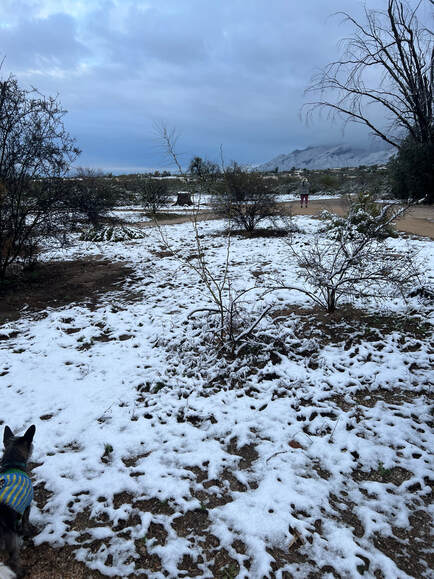
This is just inside the Labyrinth entrance to the Rio Vista Natural Resource Park. You can see the Santa Catalinas in the background with snow all the way down the slopes.
Photos courtesy of Melanie Campbell-Carter
Photos courtesy of Estelle Stern-Eilers
“Close Encounter with An Ant-Lion, and Lived To Tell The Tale”
WHAT?? YIKES!! What Can This Be About??
By Susan Andersen
Mostly, but, not ALL kidding aside, there is a critter that you may encounter right here in our Rillito Bend Neighborhood that fall under this description!
If you look closely in the soft, sandy soil, often at the base of the mesquite trees along Cactus Boulevard in the “Rain Garden”, you will often see small cone-shaped holes. They can be solitary or grouped together, as may as 10 or more. As the name implies- they eat ants.
If you look closely in the soft, sandy soil, often at the base of the mesquite trees along Cactus Boulevard in the “Rain Garden”, you will often see small cone-shaped holes. They can be solitary or grouped together, as may as 10 or more. As the name implies- they eat ants.
Photo by Author, 2022
The ANTLION is an insect in the family Myrmeleontidae, a group of about 2,000 species found throughout the warmer regions of the world. The larva make the sand pits to catch their ant prey. The larvae are the longest living stage lasting about 2 years. In comparison, the adults live about 4 weeks, or long enough to mate and lay eggs.
Image from Encyclopedia Britannica
The Antlion trap is an engineering marvel. It takes some time to build to the appropriate specifications for the sand type. You can find a description of the process in READ MORE section below.
Image from OldBlockWriter
It is said that if you quickly dig down at the bottom of the pit with a spoon and put that soil in a small strainer, you can sieve out the Antlion, in order to actually see one. I have tried this and NEVER been successful. The critter is EXTREMELY sensitive to ground vibrations in order to sense an ant walking along the ground. It is long gone by the time my heavy foot has gotten anywhere near the pit.
You may know these creatures by many other names: DOODLE BUG, ANTLION LACEWING, isn’t this just plain fun?
You may know these creatures by many other names: DOODLE BUG, ANTLION LACEWING, isn’t this just plain fun?
Image from BugGuide
Adult antlions are much bigger than the larvae and often called lacewings.
For more information and a couple of videos on trap building
By Susan Andersen
I live in the Winterhaven Village Townhomes, between Country Club and Cactus Blvd, North of Prince. Our white-walled compound has been softened with the drought tolerant plantings along Cactus and Prince, so pretty.
We are deep into winter now, but not too long ago while it was still warm, I came back from a walk down Cactus with a purloined piece of the wild milkweed vine. I planted it in my back yard and it took off up the wall.

Within 1 1/2 hours the beautiful chrysalis with gold sparkly trim had been formed.
2 days later there was the newly emerged Monarch Butterfly, fat bodied, crumpled wings, crimped antennae. It wriggled and stretched and slowly expanded it wings.
I turned my back for 1 hour, when I came back she (no spot on the hind wing) had flown the coop! Off she goes, I wish her well! Mexico !!! Pismo Beach !!! Pacific Grove !!!
Fun Fact
- Monarch butterflies communicate with scents and colors. The males attract females to mate by releasing chemicals from scent glands on the hind wings. Monarchs signal to other animals that they are poisonous by having bright orange wings. The bright colors serve as a warning that predators should attack at their own risk. (National Wildlife Foundation website)
More Information on Monarchs

Frequently encountered all over Arizona is the Sacred Datura, scientific name Datura wrightii. In RillitoBend, it is seen in private gardens, on roadsides, and in Summer 2022, in the Rancho Morado Rain Garden.
Datura wrightii in private garden, 2022 monsoon season, single plant
Photo by Melanie Campbell-Carter
Datura wrightii in private garden, 2022 monsoon season, single plant
Photo by Melanie Campbell-Carter

This fascinating perennial belongs to the Solanaceae family, along with tomatoes, potatoes, peppers, and eggplant. Other common names for the Datura include: Jimson weed, thorn-apple, moon lily, and angel’s trumpet. Much like the potato, the Datura has a fleshy, tuberous root which sprouts when the soil warms. Unlike the potato, Datura is relatively easy to grow from seed.
Datura wrightii, private garden, 2022
Photo by Melanie Campbell-Carter
Datura wrightii, private garden, 2022
Photo by Melanie Campbell-Carter

Datura is a night bloomer, pollinated by nocturnal moths and occasionally, bats. A single blossom may have up to one ounce of nectar at its base, which at dusk perfumes a wide area to attract its pollinators. The primary pollinators are the sphinx or hawk moths, which are often mistaken for a hummingbird at dusk. Some of these large moths are about the same size as a hummingbird, making a soft whirring noise with their wings as they hover at each newly opened bloom.
Hawkmoth (Hyles lineata) at Sacred Datura (Datura wrightii) flower
Photo by Mike Lewinski, Tres Piedras, NM
Courtesy of https://creativecommons.org/licenses/by/2.0]
Hawkmoth (Hyles lineata) at Sacred Datura (Datura wrightii) flower
Photo by Mike Lewinski, Tres Piedras, NM
Courtesy of https://creativecommons.org/licenses/by/2.0]
 Native Range of Sacred Datura (D. wrightii) Courtesy of US Dept of Agriculture, https://plants.sc.egov.usda.gov/home/plantProfile?symbol=DAWR2 © 2014 Esri | USDA-NRCS-NGCE & NPDT | The name Sacred Datura refers to the hallucinogenic effects of the plant when consumed by indigenous holy people and ceremony participants. All parts of the plant are toxic, and potentially fatal when consumed. Deliberate ingestion by non-human creatures is rare, since all but the flower itself is bad-smelling and bitter-tasting. However, humans seeking a mind-altering experience can inflict permanent damage to lungs, GI tract, kidneys, or the heart; mental impairment may be permanent; and death is not an uncommon outcome. The Sacred Datura has many other ethnobotanical uses among North American indigenous peoples. |
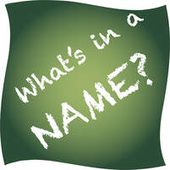
- The word Datura is an ancient Hindu word.
- Wrightii honors Charles Wright (1811-1885), an American botanical collector.
- Jimson weed is thought to refer to a related species in the eastern US near Jamestown, Virginia – and the name of Jamestown gradually altered to ‘Jimson’. Early colonists were reported to exhibit strange behavior and illness after consuming the plant when other foods were unavailable.
- The Solanaceae family is interchangeably called the Nightshade family, possibly because many of its members bloom at night, grow underground, or thrive in shady locations.
| Gardeners handling the Sacred Datura will be safe from the plant toxins by wearing gloves, washing hands with soap and water, and cleaning their tools after use. Seeds can be collected from dried seed pods in the fall, and planted in the spring. Go to this link for details on propagation. Maturing Seed Pod on Datura wrightii, private garden 2022 Photo by Melanie Campbell-Carter |
| Datura discolor, showing purple streaks in throat of open flowers. Rio Vista Natural Resource Park, 2022 Photo by Melanie Campbell-Carter In RillitoBend, we have two species of Datura commonly seen in spring and summer after rainy periods: Datura wrightii and Datura discolor. To tell them apart, examine the flower or the seed pods. D wrightii has a pure white throat and pale lavender edges, is somewhat larger overall, and the seed pod has shorter spines. D discolor has purple streaks in the white throat of the flower, is somewhat smaller, and the seed pod has long spines, often > 1 cm. Datura discolor is the predominant Datura species in Rio Vista Natural Resource Park. | One-year-old Datura wrightii, west side of Cactus Blvd, during the monsoon 2022 Photo by Melanie Campbell-Carter |
Sonoran Moonglow
22" X 16", acrylic on paper
© 2021, Melanie Campbell-Carter
Photo by Prull Photography
22" X 16", acrylic on paper
© 2021, Melanie Campbell-Carter
Photo by Prull Photography
Sacred Datura article sources and photo credits:

This is the inaugural blog of RillitoBend Rambles. It is an introduction to of some of our favorite places for observing nature. In future posts, we will have pictures and information about some of our favorite plants and critters.
One of the goals of the neighborhood association is to improve the aesthetics and livability of our everyday surroundings. (our VISIONS). To that end, several roadsides have been planted and are tended with the volunteer help of many neighbors.

2. Lucie's Garden: One of the first enhancement projects was Lucie’s Garden just north of the Winterhaven Village Townhomes gate on Cactus Blvd. 3. Linear Garden on Cactus: The area between the Winterhaven Village gate and Prince was planted in the effort to soften the look of the wall. The varieties of plants are amazing, and today the plants are well-established without supplemental watering.

4. Friday Cat's Memorial Rain Garden: Across the street is a little oasis being developed around the mesquites.

5. Rain Garden: During the 2021 monsoon season, a profusion of plants appeared on their own outside of Rancho Morado on Cactus and we dubbed it the “Rain Garden”. The City donated boulders and rocks that the neighborhood volunteers placed for traffic control and rainwater harvesting.

6. Meadowview linear garden: Turning the corner, the roadside north of Meadowview on Allen Road was planted with native plants to begin to soften the appearance of Allen and take advantage of some of the abundance of stormwater heading east.

7. Cactus/Allen Intersection: The night blooming cereus at the N/E and S/W corners are some special surprises at this intersection (plus some at the roundabout!). And in ponds that appear during the monsoon rains, one can see spadefoots!
This is just the start.
If you would like to help spread the word on the glorious abundance around us,
send an email to [email protected]
Happy Rambling!
RillitoBend Rambles shares images and stories of our neighborhood that support our core value of respect for our natural world. Participation is open to all, whether by subscribing to posts, commenting on stories, or submitting your own rambling adventure for publication.
Please sign up below to receive our postings
Please sign up below to receive our postings
Archives
April 2025
August 2024
June 2024
April 2024
August 2023
July 2023
June 2023
March 2023
February 2023
December 2022
November 2022
October 2022
Categories
All
Animals
Bobcats
Flowers
Gardens
Insects
Invasives
RVNRP
The RillitoBend Neighborhood also has a mailing list to keep people up to date on the goings on in the 'hood' Sign up Below









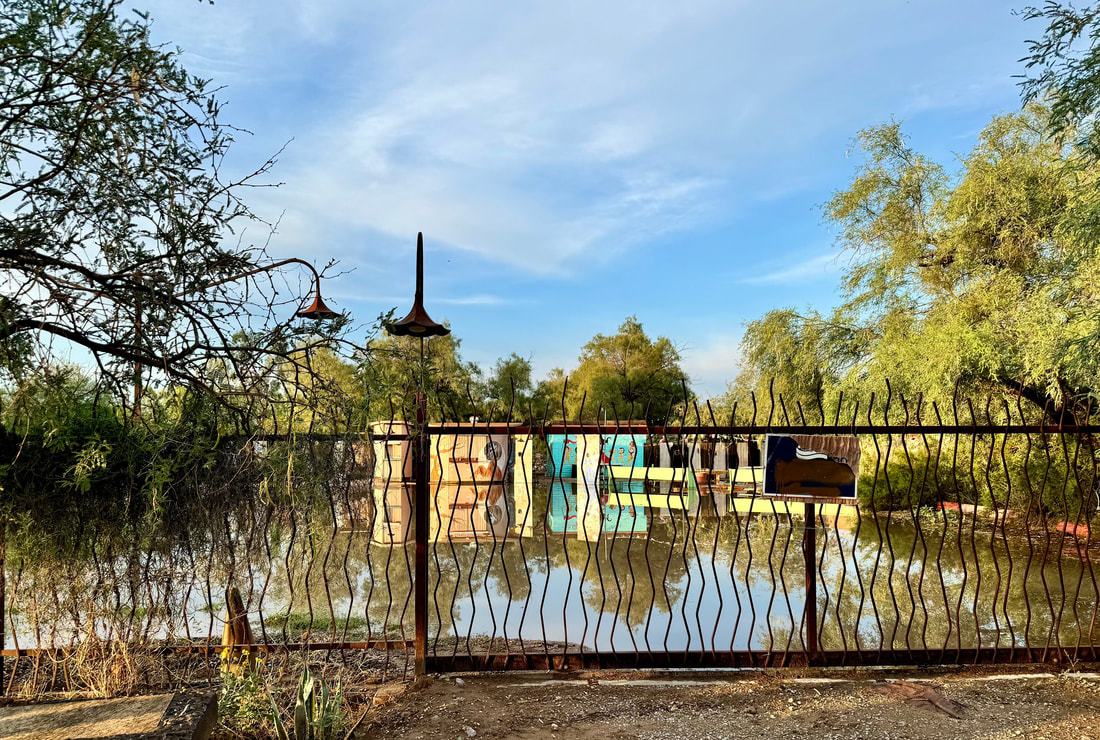


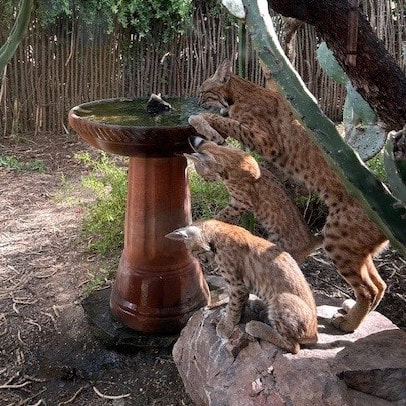

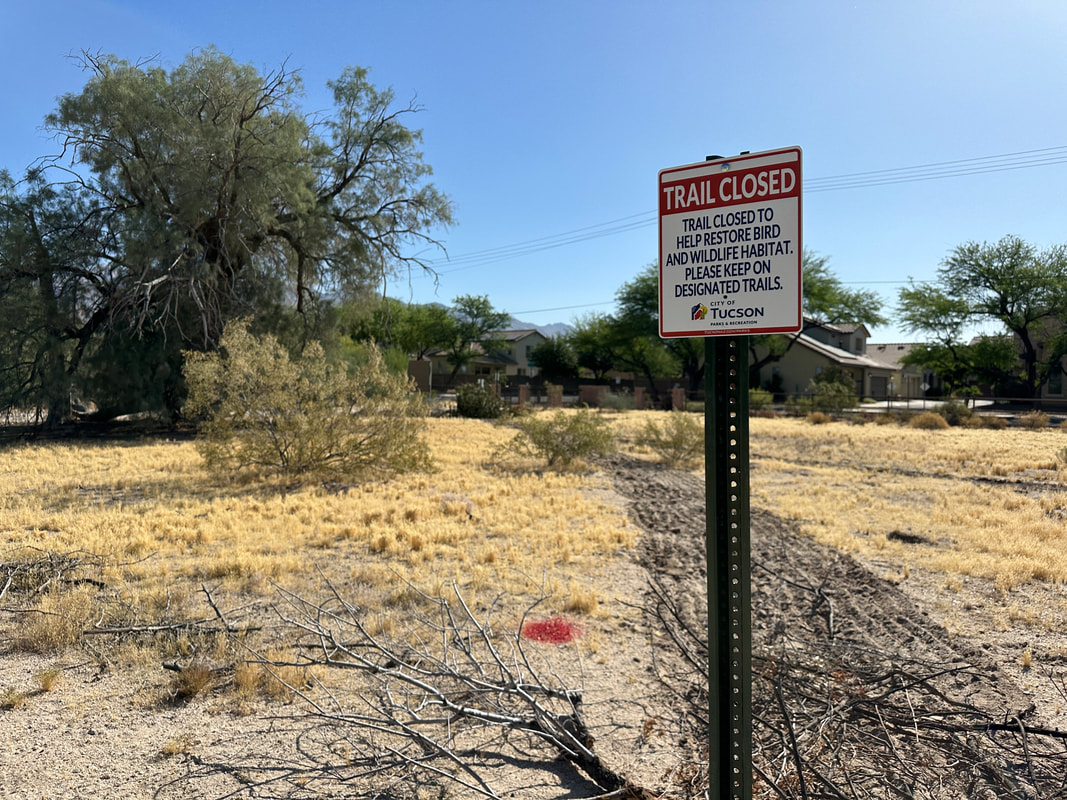











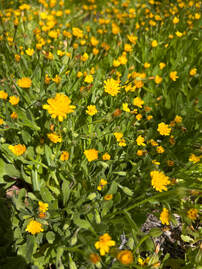




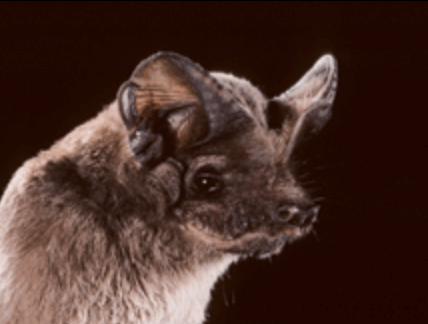



















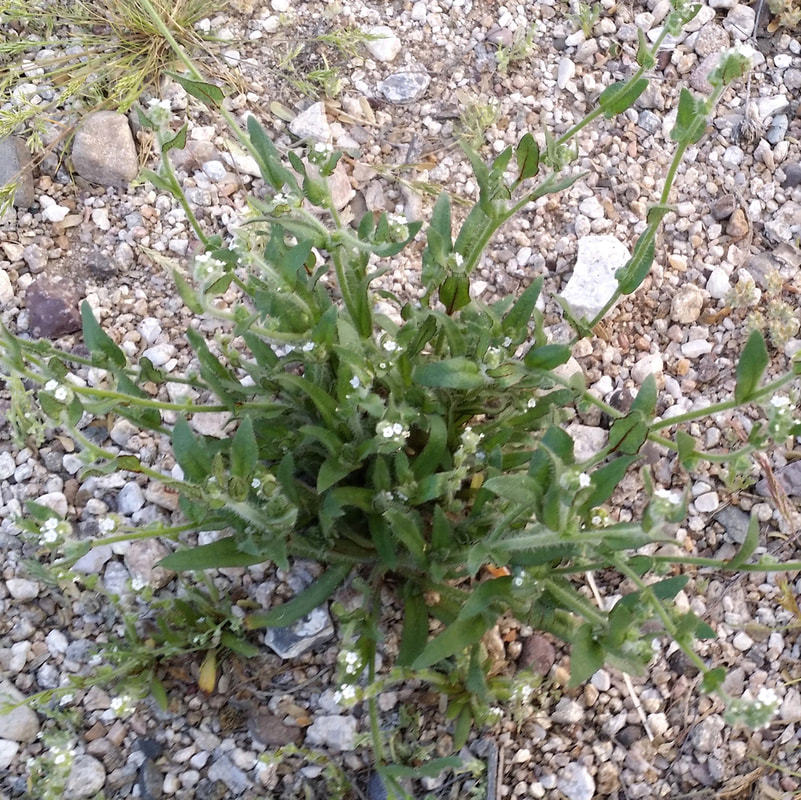








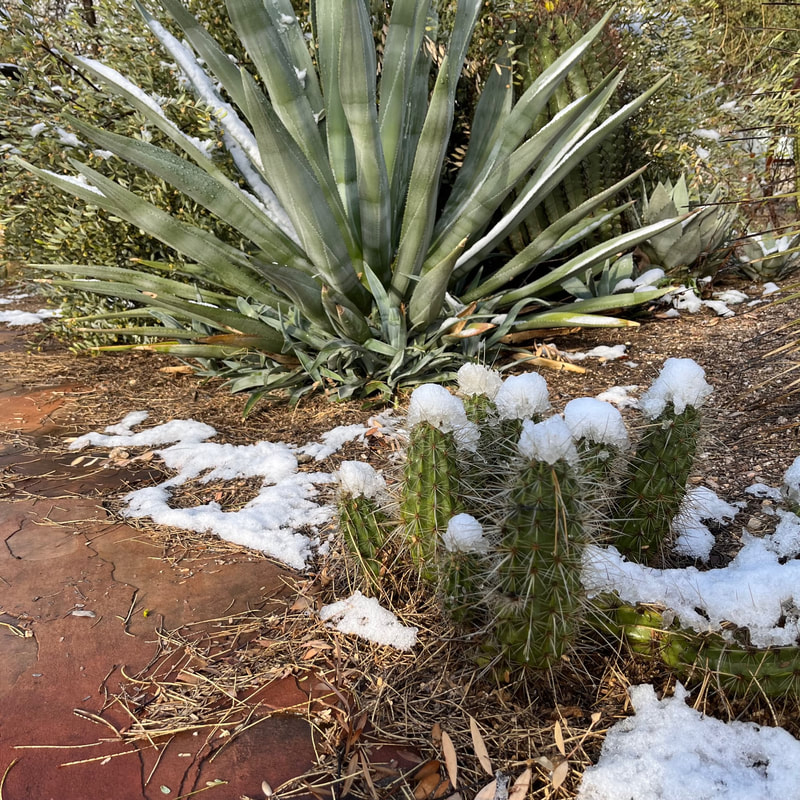





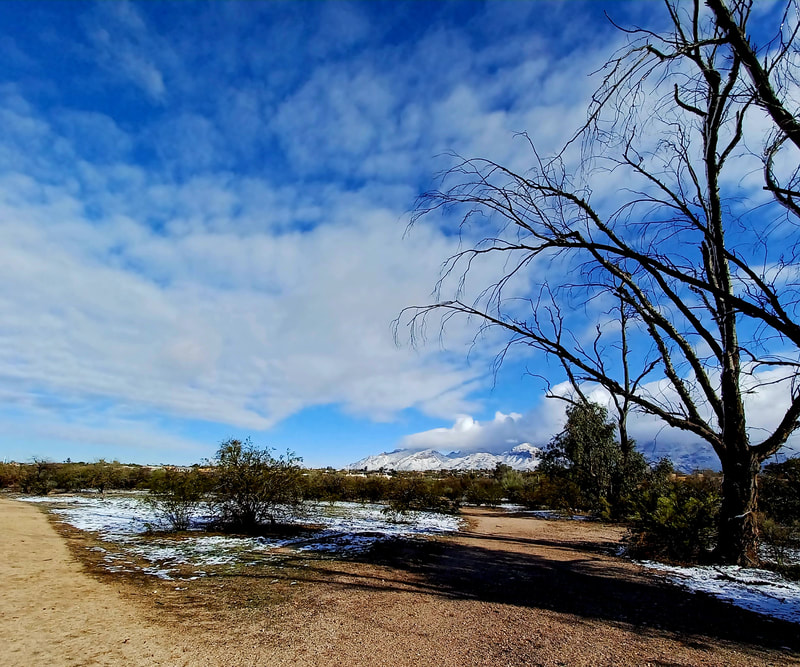






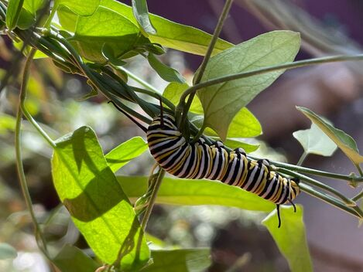

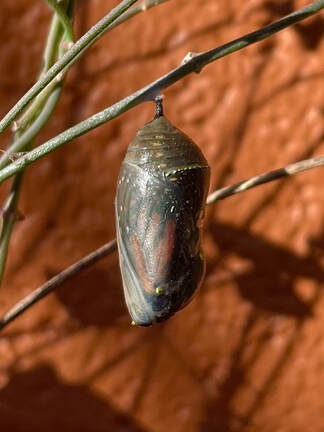








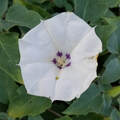
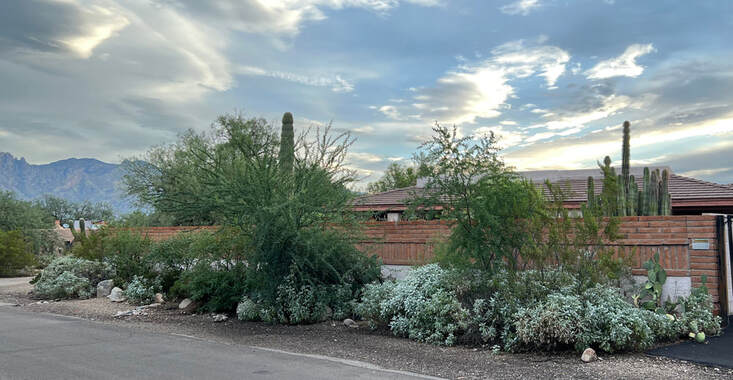
 RSS Feed
RSS Feed